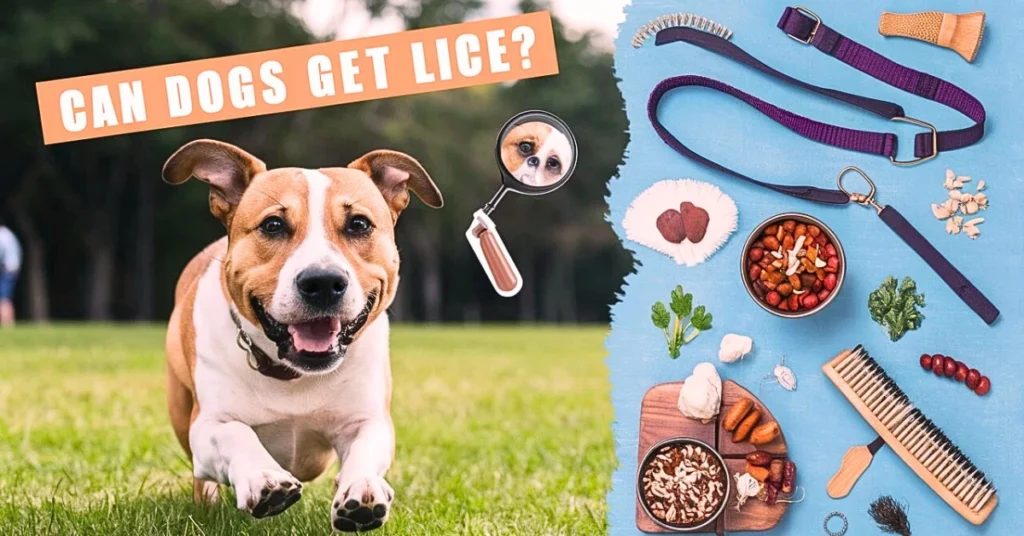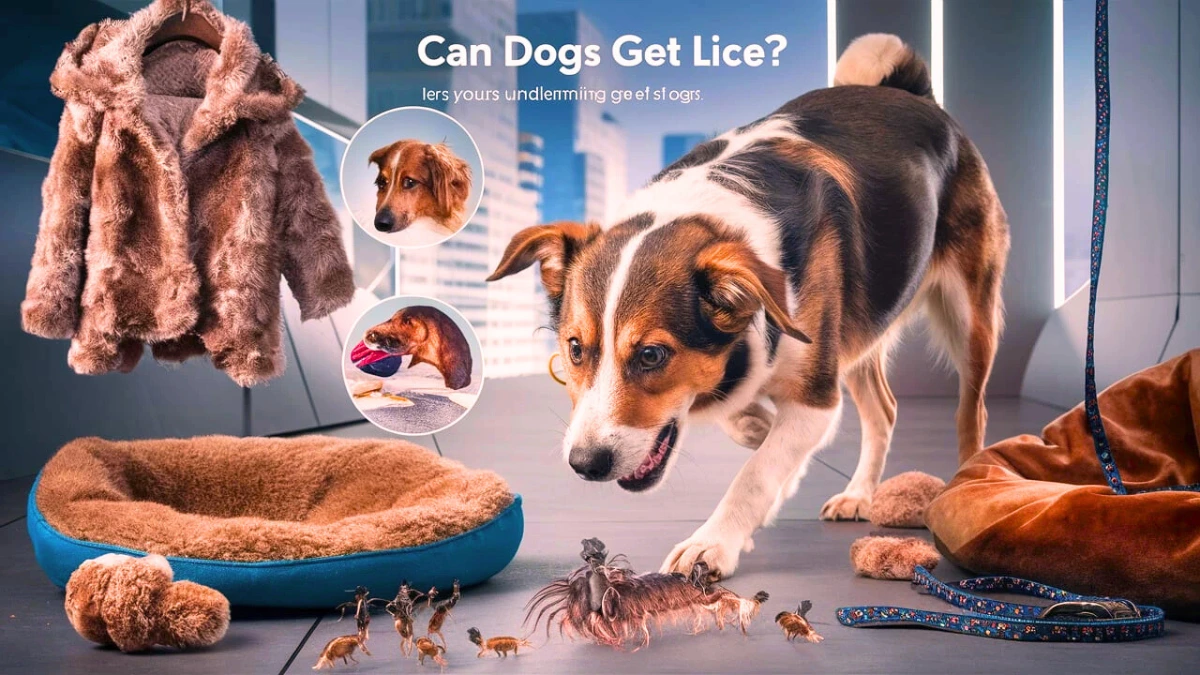As a dog owner, you’ve likely dealt with fleas or ticks, but lice are a lesser-known parasite that can plague your pup. The question “Can dogs get lice?” might catch you off guard, especially since lice are often associated with humans. The answer is yes, but dog lice are species-specific and behave differently than their human counterparts. This 1,000-word guide will explore everything U.S. pet owners need to know about dog lice, from identification and life cycles to treatment and prevention.
Understanding Dog Lice: Species, Types, and Behaviour
Lice are wingless, flat-bodied parasites that live on the skin and fur of their hosts. While humans and dogs both get lice, they are not the same species. Dog lice (Trichodectes canis and Linognathus setosus) cannot survive on humans, and human lice (Pediculus humanus) cannot infest dogs.
Two Types of Dog Lice
-
Chewing Lice (Trichodectes canis):
-
Feed on skin debris, secretions, and hair.
-
Often cause intense itching and skin irritation.
-
-
Sucking Lice (Linognathus setosus):
-
Pierce the skin to feed on blood.
-
It can lead to anaemia in severe cases.
-
Lice infestations (pediculosis) are rare in well-cared-for pets in the U.S. but are more common in overcrowded or unsanitary environments like shelters, breeding facilities, or puppy mills.
How Do Dogs Get Lice? Transmission and Risk Factors
Lice spread through direct contact with an infested dog or shared items (bedding, brushes, collars). Lice cannot jump or fly, unlike fleas, so transmission requires close, sustained proximity.
High-Risk Situations
-
Multi-dog households: Close contact increases risk.
-
Puppies and senior dogs: Weaker immune systems make them vulnerable.
-
Seasonal factors: Lice thrive in colder months when dogs huddle for warmth.
-
Poor grooming hygiene: Matted fur provides an ideal environment for lice.
Symptoms of Lice in Dogs: What to Look For
Early detection is critical. Here are the most common signs:
Physical Symptoms
-
Severe itching: Dogs may scratch, bite, or rub against furniture.
-
Visible parasites: Adult lice (2–4 mm long) are tan or grey and move slowly.
-
Nits (eggs): Tiny white specks glued to hair shafts near the skin.
-
Coat changes: Dryness, matting, or hair loss (especially around ears, neck, and groin).
-
Skin damage: Redness, scabs, or sores from scratching.
-
Anemia: Pale gums, lethargy, or weakness (caused by sucking lice).
Behavioral Changes
-
Restlessness or agitation.
-
Loss of appetite.
-
Avoidance of touch (due to skin sensitivity).

Can Dogs Get Lice
Diagnosing Dog Lice: Vet vs. At-Home Checks
While you can spot lice or nits during grooming, a veterinarian should confirm the diagnosis. Vets use:
-
Magnification tools to identify lice/nits.
-
Skin scrapings to rule out mites or fungal infections.
-
Blood tests (if anaemia is suspected).
Note: Lice are often mistaken for dandruff or flea dirt. To differentiate, place debris on a damp paper towel—lice eggs will stick, while dandruff dissolves.
Treating Dog Lice: Step-by-Step Solutions
Lice infestations require prompt, thorough treatment. Here’s what to do:
1. Medicated Treatments
-
Prescription shampoos/dips: Products containing pyrethrins or selamectin kill lice on contact.
-
Topical preventatives: Monthly spot-on treatments (e.g., Advantage Multi®, Revolution®) prevent reinfestation.
-
Oral medications: In severe cases, vets may prescribe oral parasiticides.
⚠️ Caution: Never use human lice shampoos (e.g., permethrin-based products) on dogs—they can be toxic!
2. Environmental Decontamination
-
Wash bedding, toys, and collars: Use hot water (at least 130°F) and dry on high heat.
-
Disinfect grooming tools: Soak combs and brushes in boiling water or lice-killing solutions.
-
Vacuum thoroughly: Focus on carpets, furniture, and car seats where nits may linger.
3. Quarantine and Follow-Up
-
Isolate infested dogs from other pets for 2–4 weeks.
-
Repeat treatments as directed (lice eggs hatch in 1–2 weeks).
Preventing Lice in Dogs: Proactive Strategies
Prevention is simpler (and cheaper) than treatment. Follow these tips:
1. Regular Grooming
-
Brush your dog weekly to check for parasites.
-
Keep their coat clean and trimmed to avoid matting.
2. Avoid High-Risk Environments
-
Steer clear of dogs with visible infestations.
-
Be cautious at dog parks, boarding facilities, or grooming salons.
3. Sanitise Shared Items
-
Wash bedding monthly.
-
Avoid sharing leashes, toys, or bowls with unknown dogs.
4. Strengthen Immune Health
-
Feed a balanced diet rich in omega-3 fatty acids.
-
Schedule annual vet check-ups.
5. Use Preventive Medications
-
Ask your vet about flea-and-tick preventatives that also repel lice.
Myths vs. Facts About Dog Lice
Myth: “Dog lice can spread to humans.”
Fact: Dog lice are species-specific—they die within days if they contact humans.
Myth: “Lice mean my dog is dirty.”
Fact: Lice infestations can happen to any dog, regardless of hygiene.
Myth: “Lice disappear on their own.”
Fact: Without treatment, lice multiply rapidly and worsen over time.
When to Call the Vet: Red Flags
Contact your vet immediately if your dog:
-
Shows signs of anaemia (lethargy, pale gums).
-
Develops secondary infections (oozing sores, foul odour).
-
Doesn’t improve after initial treatment.
The Bigger Picture: Lice in the U.S. Dog Population
According to the American Kennel Club, lice infestations are rare in the U.S. due to widespread use of flea-and-tick preventatives. However, outbreaks occasionally occur in:
-
Rescue organisations.
-
Rural areas with limited vet access.
-
Puppies are sold online or in pet stores.
Final Thoughts: Stay Calm and Take Action
While lice are unsettling, they’re not a death sentence for your dog’s health. With proper treatment, most infestations resolve within 2–4 weeks. By staying informed, maintaining hygiene, and partnering with your vet, you can protect your furry friend from these pesky parasites.
Have questions or a lice-busting success story? Share with fellow pet owners in the comments!
Sources:
-
American Veterinary Medical Association (AVMA)
-
Merck Veterinary Manual
-
Companion Animal Parasite Council (CAPC)
Disclaimer: This content is not a substitute for professional veterinary advice. Always consult your veterinarian for diagnosis and treatment plans.


3 thoughts on “Can Dogs Get Lice? A Comprehensive Guide for U.S. Pet Owners in 2025”